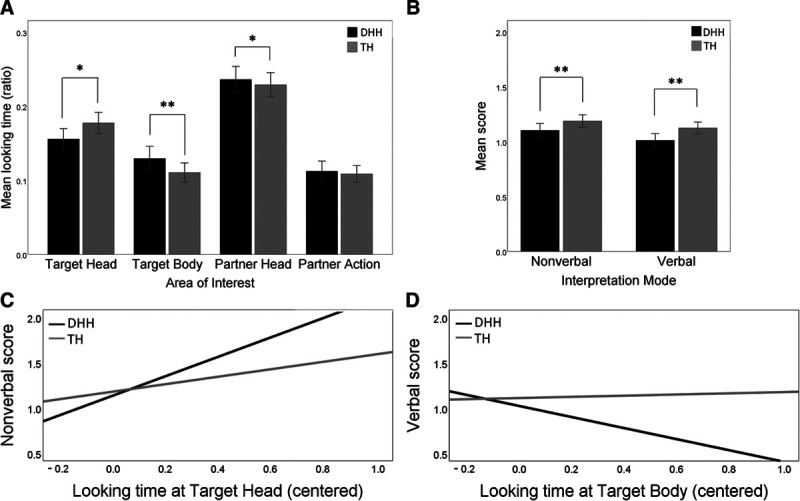Fig. 2.

Group differences during the emotion understanding task. (A) DHH children (in black) looked for a shorter time at the target person’s head, and for a longer time at target person’s body and trigger person’s head, than TH children. (B) DHH children were less accurate (on a scale from 0 to 2) than TH children when nonverbally and verbally interpreted the emotion in the situations. (C) A larger increase in nonverbal interpretation scores with longer looking times at target person’s head was observed in DHH children than in TH children. (D) A decrease in verbal interpretation scores with longer looking times at target person’s body was observed in DHH children, but not in TH children. DHH children were represented with black bars/lines; TH children were represented with gray bars/lines. The error bars indicate 95% confidence interval. *P < 0.05; **P < 0.01. DHH indicates deaf or hard-of-hearing; TH, typically hearing.
